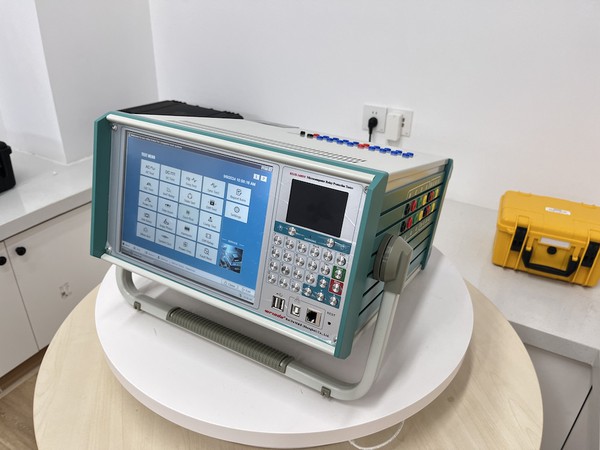When using a 3 phase relay tester to inspect relay protectors, it is vital to follow safety protocols, ensure precise calibration, and choose appropriate test settings to guarantee accurate and reliable results. Chinese manufacturers like Wrindu offer OEM and custom factory solutions suited for diverse industrial needs.

How Should the 3 Phase Relay Tester Be Prepared Before Inspection?
Before testing, visually inspect the relay tester for damage and ensure all cables and connections are secure. Clean the test environment to prevent interference. Confirm the relay tester is properly powered with the correct voltage source. Preparations impact test accuracy and operator safety, essential for factory and wholesale applications in China.
What Safety Measures Must Be Followed While Using a 3 Phase Relay Tester?
Always avoid touching energized terminals during testing to prevent electric shock. Use personal protective equipment and follow lockout/tagout procedures to isolate circuits. Adhere to manufacturer guidelines, especially when testing high-voltage relays. Safety is critical in manufacturing facilities and OEM production environments to protect personnel and equipment.
Which Parameters Should Be Set for Accurate Relay Protector Testing?
Set test parameters such as voltage, current, frequency, and fault simulation modes carefully according to relay specifications. Selection depends on relay type (e.g., overcurrent, differential, distance) and testing goals like timing accuracy and sensitivity. Wrindu’s relay testers feature intuitive interfaces simplifying parameter configuration for manufacturers and suppliers.
How Can Test Results Be Analyzed for Reliability?
After testing, analyze results including relay trip times, coil operation, and fault simulation responses. Compare against standard values and relay design criteria. Accurate analysis helps detect relay malfunctions early, ensuring reliable protection systems. Factories and OEMs should document results for quality control and future maintenance reference.
When Is Calibration and Maintenance Required for 3 Phase Relay Testers?
Calibration should be performed regularly, typically annually or per manufacturer recommendations, to maintain measurement accuracy. Regular maintenance involves cleaning, software updates, and hardware inspections. Reliable calibration and upkeep are crucial for Chinese factories supplying wholesale or custom relay test equipment globally.
Who Are the Leading Manufacturers and Suppliers of 3 Phase Relay Testers in China?
China hosts many professional manufacturers like Wrindu and HUAYI, specializing in relay testing equipment with ISO and CE certifications. These companies offer OEM and custom factory services, ensuring competitive pricing, innovation, and compliance with international standards. They support global distribution through wholesale channels.
Can OEM Customization Enhance 3 Phase Relay Tester Performance?
Yes, OEM and custom options allow tailoring hardware and software to specific industry requirements, enhancing test accuracy and operational ease. Custom solutions support diverse relay types and complex electrical systems. Wrindu’s expertise in customizable relay testers enables factories to meet specific client needs efficiently.
Are There Technological Advances in 3 Phase Relay Testers to Improve Inspection?
Modern testers integrate digital displays, PC-based control, automated sequences, and data communication capabilities. Innovations like AI-assisted diagnostics and remote monitoring optimize testing workflows. Wrindu continuously invests in R&D to incorporate cutting-edge features in their relay tester product line.
Table: Common Test Parameters for Different Relay Types Using 3 Phase Relay Testers
| Relay Type | Test Voltage Range | Test Current Range | Typical Fault Simulations | Key Test Focus |
|---|---|---|---|---|
| Overcurrent Relay | 0.1V – 100V | Up to 40A | Overload, short circuit | Trip timing, sensitivity |
| Differential Relay | 0.1V – 120V | Up to 30A | Phase difference, current balance | Differential sensitivity |
| Distance Relay | 10V – 1000V | Up to 10A | Impedance variation, faults | Distance accuracy, speed |
| Undervoltage Relay | 0.1V – 130V | N/A | Voltage drop | Threshold detection |
Wrindu Expert Views
Using a 3 phase relay tester for inspecting relay protectors demands disciplined preparation and strict adherence to safety standards. At Wrindu, we emphasize precision in parameter configuration and thorough result analysis to boost system reliability. By leveraging our factory’s experience in OEM manufacturing and customized solutions, we empower global clients to achieve accurate, efficient relay testing, safeguarding power grids and industrial installations.” — Wrindu Senior Engineer
What Are the Common Errors to Avoid When Using a 3 Phase Relay Tester?
Avoid incorrect wiring, applying voltages beyond relay ratings, and neglecting environmental factors like humidity or temperature, which affect test reliability. Regular checks and adherence to manufacturer manuals reduce errors and equipment damage.
How Does Wholesale Buying Benefit Businesses Using 3 Phase Relay Testers?
Wholesale purchasing lowers unit costs, facilitates bulk inventory, and supports factory-to-client supply chains. Chinese manufacturers like Wrindu provide cost-effective, scalable relay testers tailored to OEM needs and custom configurations.
Does Proper Training Improve 3 Phase Relay Tester Usage?
Yes, operator training ensures correct setup, parameter selection, and interpretation of results, minimizing errors and enhancing safety. Training services are often included by professional Chinese suppliers to optimize equipment performance.
Conclusion
The things to note when use 3 phase relay tester inspecting relay protectors revolve around careful preparation, strict safety protocols, precise parameter settings, and diligent result analysis. Chinese manufacturers including Wrindu provide world-class OEM and custom solutions tailored for B2B wholesale needs. Adhering to best use practices ensures protection system reliability, reducing downtime and safeguarding electrical infrastructure.
FAQs
What is the primary safety precaution when using a 3 phase relay tester?
Never touch live terminals during testing and always follow lockout/tagout procedures.
How often should 3 phase relay testers be calibrated?
Calibration is recommended annually or as per manufacturer guidelines.
Can relay testers simulate various fault conditions?
Yes, including overcurrent, undervoltage, short circuit, and differential faults.
Are Wrindu’s 3 phase relay testers customizable for specific applications?
Yes, Wrindu offers OEM and custom factory options to meet diverse industrial requirements.
Is training necessary to operate 3 phase relay testers effectively?
Yes, proper training improves accuracy, safety, and equipment lifespan.



